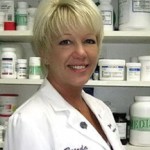Understanding Autism
“Autism is a disorder of neural development characterized by impaired social interaction and communication, and by restricted and repetitive behavior usually occurring before a child is three years old.” The definition of autism has changed over time causing confusion over exactly what it is. Confusion is understood given the varying terms surrounding the disorder such as pervasive developmental disorder–not otherwise specified, (PDD-NOS), atypical autism, autism spectrum disorder, Aspberger’s Syndrome, schizophrenia, developmental disability, etc.
Leo Kanner, child psychiatrist, is accredited with defining autism in 1943. According to Kanner, the major characteristics of autism include inability to relate to people, failure to use language for communication purposes in social situations, a resistance to change and an obsession with maintaining sameness, an orientation toward objects rather than people, and good cognitive/intellectual capabilities. He also noted a lack of response to environment, strict adherence to routines, emotional turmoil when rituals are disrupted and an unusual language. While Kanner accurately identified autism, he is often criticized for his thoughts on its origin. He felt autism came about as a result of parenting without emotional warmth.
Twenty five years ago autism was rarely spoken of. Today it would be difficult to find someone who hasn’t had first hand contact with a person with autism. The current rate of autism occurrence in the US is one in 110 births, undeniably epidemic. This is a 1500 to 6000 percent increase over the last twenty years. The gross increase is not solely due to better diagnosis criteria and improved education of medical professionals. Nor are genetics the root cause because the incidences of genetic disorders will remain stable over time.
There is definite debate regarding causes and/or contributing factors to the development of autism. Currently there are research programs dedicated to exploring the genetic, biological and environmental processes potentially playing a role in the increase in autism occurrence. Although extensive research has attempted to pinpoint its origin, the exact cause remains a mystery. It has been suggested that autism is a genetic disorder triggered by environmental factors in combination with systemic weaknesses such as digestive issues or nutritional deficiencies. For example, a child who is predisposed genetically has a weakened immune system due to chronic infections and is exposed repeatedly to an environmental hazard such as a virus, chemical, or toxin might develop autism. A child with a healthy immune system exposed to the same set of circumstances could continue with normal growth and development, or end up somewhere on the ‘spectrum’. Because of the diversity of the symptomatology associated with autism, it is most likely that the cause of autism is not the same for every individual with the disorder.
Without question, autism is a disorder that has both fascinated and frustrated the medical community. Likewise it has left parents, grandparents, other family members and caregivers feeling helpless and lost. Just as no two people are exactly the alike, neither are two people with the same diagnosis. Many children with autism have basic contributing factors in common but will have varying issues resulting in varying symptoms. It is necessary to assess each child individually, identify any imbalances, nutritional deficiencies, or systemic weaknesses and address them appropriately. In other words, identify what is happening within each child and treat him or her accordingly. This approach makes sense and is one that should be practiced throughout the field of medicine.
April is autism awareness month. While much has been learned about autism since it was first identified, there are still many mysteries surrounding the disorder. There are far more questions than answers when it comes to autism and unfortunately, there is no absolute protocol that will encompass every child and every situation. What works wonders for one family may do very little or nothing at all for another. Regardless of cause, the specifics of a particular child’s condition should guide the way to his/her treatment plan.
For more information, call
Saveway Compounding Pharmacy
at 302-369-5520 or 1-877-225-
8469, or visit them at 31 Albe Drive,
#1, Newark, DE 19702.
Brenda Pavlic is a nationally certified pharmacy technician and co-owner of SaveWay Compounding Pharmacy in Newark, DE. With more than twenty-five years of pharmacy experience she has furthered her career with extensive training and education in Pharmacy Compounding, Women’s Health, Cosmeceutics, Pain Management, Aseptic and Veterinary Compounding. She has published articles and presented seminars both locally and nationally to healthcare practitioners. Her experience and education provide her with skills needed to develop formulations that ease medication administration, improve compliance and ultimately result in positive outcomes for patients.
SaveWay
Compounding Pharmacy
31 Albe Drive; Unit 1
Newark, DE 19702
Ph. (302)369-5520
Email:
[email protected]
Website:
www.savewaypharmacy.com
Hours: M-F 9am—6pm
Sat 10am—2pm
Closed Sunday
Testimonials:
You have saved my life and restored normalcy! Thank you. –BJ
You are a breath of fresh air. I felt all along my whole system was out of whack and now I am excited to move things forward in a whole body approach. –JF
It is an absolute miracle what you and your company have done for me. I am pain free for the first time in years. I can’t thank you enough.–BH



